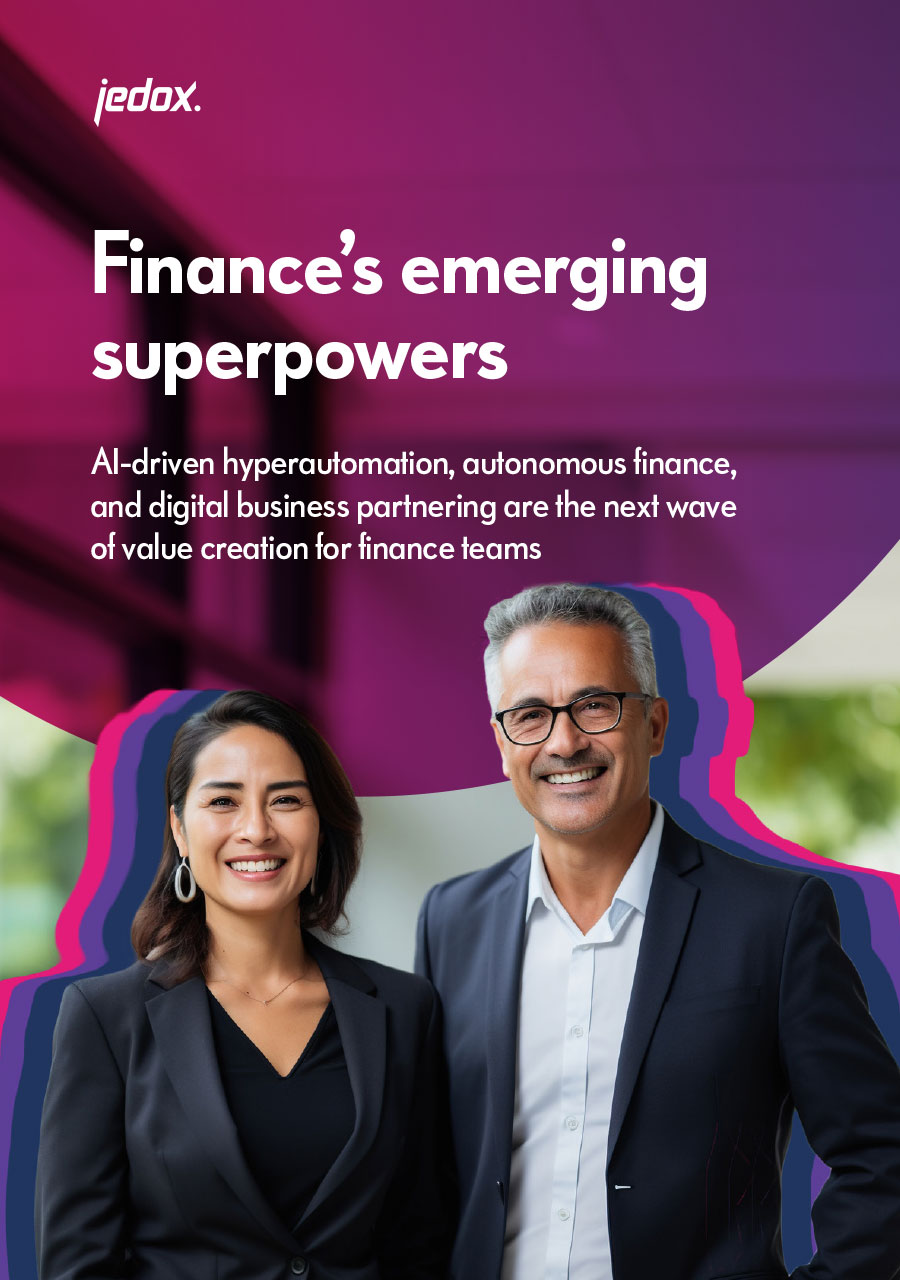- Three trends shaping the future of finance teams
- Jedox performance assessment framework
- How finance teams should think about hyperautomation and autonomous finance
- What is hyperautomation?
- Change management is important to effectively implement hyperautomation
- What is autonomous finance?
- How CFOs leverage autonomous finance
- What does it all mean?
- Examples of key drivers
- Six key considerations
- Conclusion
Three trends shaping the future of finance teams
It is time for financial planning and analysis (FP&A), business controlling, and more broadly, finance teams to reassess how they can add greater value to their organizations. Three major trends are forcing this reassessment: advanced technologies such as AI and hyperautomation, demand for increased efficiency, and global competition. However, Ventana Research asserted that by 2027 only one in four FP&A organizations will have redefined their mission to make planning easier for business unit leaders1.
Teams that understand these trends and navigate them effectively will create more value for their organizations. They will increase efficiency and unearth opportunities… or ignore such trends.
1. Advanced technologies
Artificial intelligence can automate many repetitive tasks currently handled by FP&A teams, freeing them up for more strategic analyses and forward-looking activities. Generative AI (GenAI) communicates complex information and establishes a common understanding, while machine learning (ML) algorithms help businesses make more accurate predictions and produce scenarios that model all key business drivers. With this shift in focus, FP&A teams gain a stronger understanding of business goals and how financial and operational data can inform those goals. Ultimately, this trend will create value through greater insight, self-reliance of finance teams, and automation of routine tasks.
2. Efficiency demand
Businesses are constantly looking for ways to improve efficiency and reduce costs. FP&A teams can contribute by streamlining their processes and leveraging automation to get more accomplished with fewer resources. They also can mine financial and operational data to optimize areas in an organization. As a result, new resources can be found and redeployed for activities that create value. It’s critical to be willing and adaptable to learn new technologies.
3. Global competition
Organizations operate in an increasingly volatile, complex, and globally connected world where even small, local disruptions can cause worldwide turmoil. As organizations build truly global teams that operate in different languages and cultures, the most effective have developed a common language based on a ‘single source of truth’ to move faster than the competition.
Jedox performance assessment framework
Organizations must rethink how they respond to these trends. Stephan Wedderwille, global research manager at Jedox, developed a simple framework, which helps FP&A strategists think about the strengths and weaknesses of their organizations.
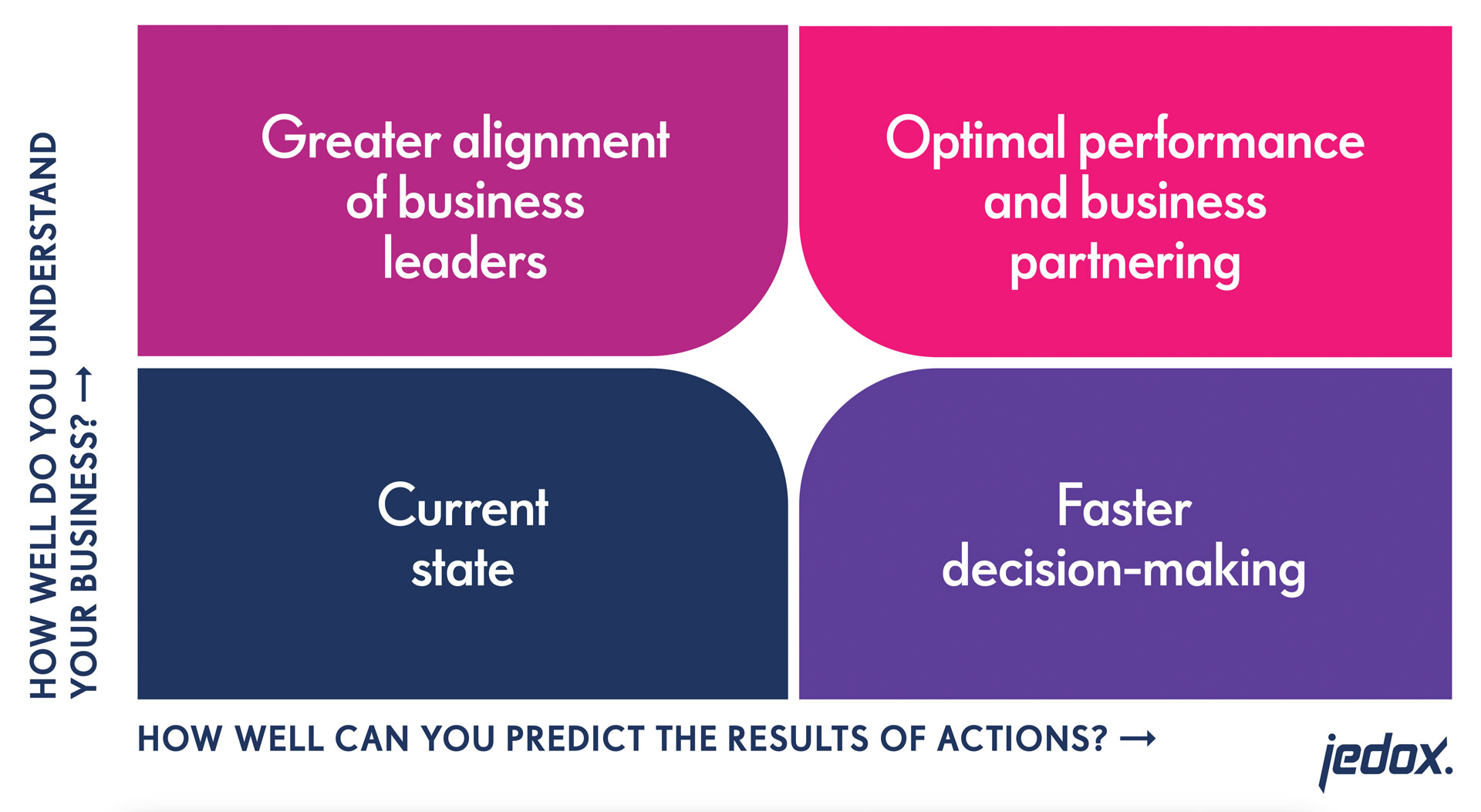
To answer where you are, there is a need for meta-competencies, including:
A recent survey conducted by Jedox (n=91), showed that a majority of FP&A professionals are spending most of their time on activities such as data collection, analysis, and reporting as compared to producing insight, influence, and impact through business partnering2.
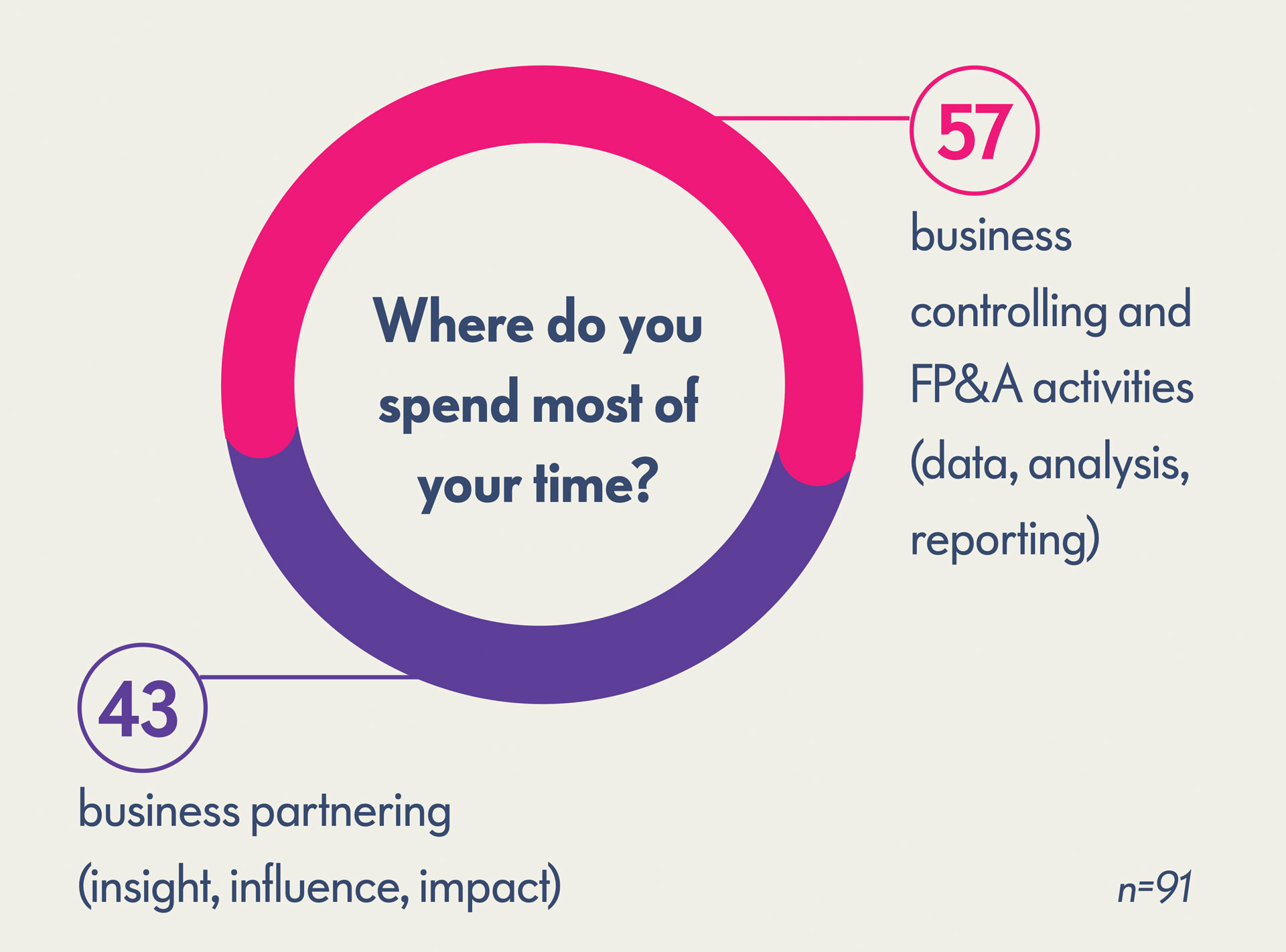
Additionally, some of the barriers for finance teams to increase value creation include:
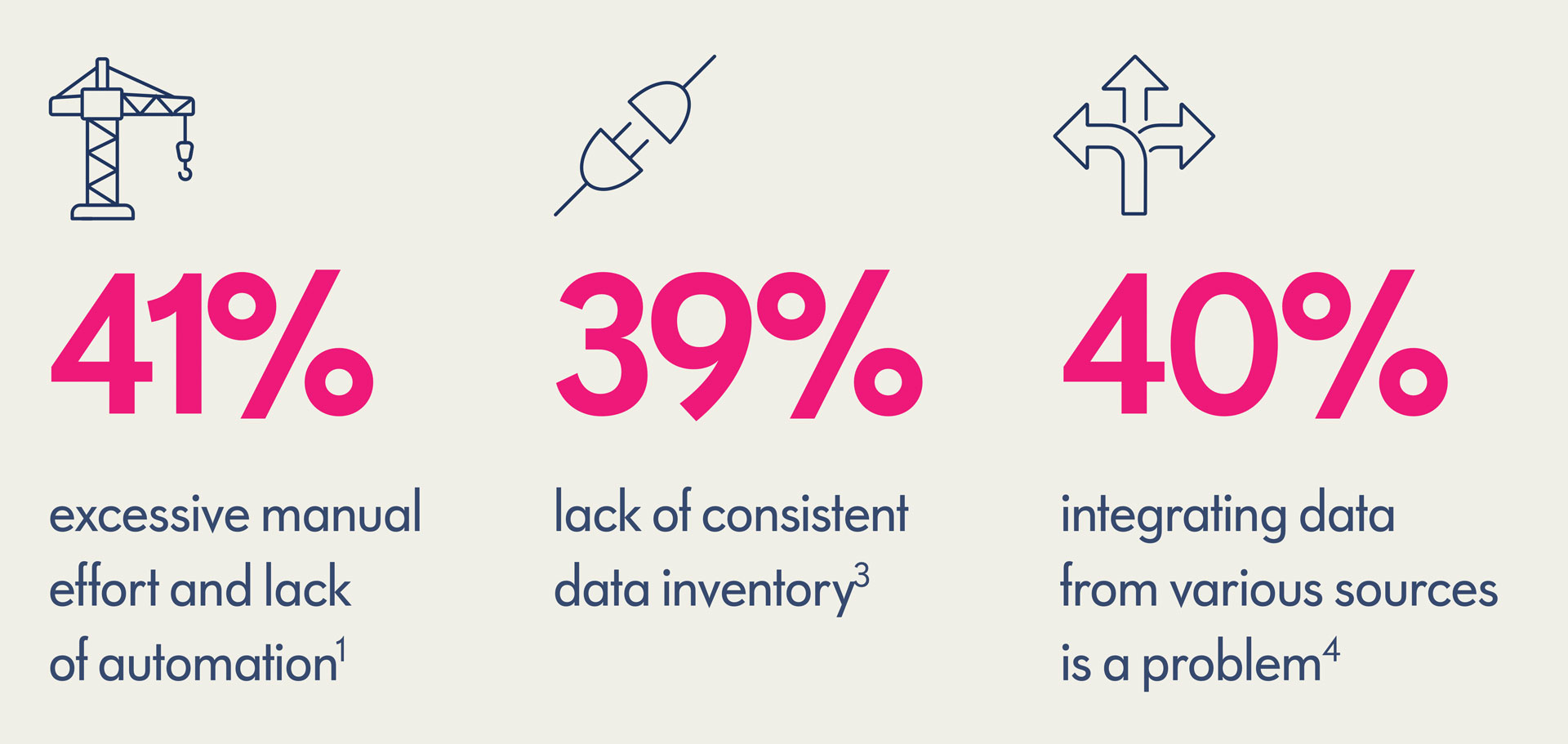
In short, today’s FP&A teams are focused too much on labor-intensive and manual activities that will be disrupted by AI and hyperautomation, the drive toward efficiency, and increased complexity from global operations. They need to plan for a future with more automated controlling activities to become strategic partners and to help businesses make better decisions in a rapidly changing environment. The focus of this whitepaper is on the first trend of AI-powered hyperautomation and autonomous finance and how this contributes to better communication, collaboration, and business partnering.
How finance teams should think about hyperautomation and autonomous finance
Gartner recently shared results from a survey of finance leaders about AI’s impact on future growth. 25% of respondents believe AI will foster increased intelligence and analysis, which will help organizations maintain or grow revenue through 20255. Through AI and other advanced technologies, finance is set to make a revolutionary digital transformation through hyperautomation and autonomous finance.
How does hyperautomation work?
Hyperautomation takes automation to the next level by combining several technologies. AI and machine learning software can autonomously learn and optimize models and operations without human interaction, but the software needs human oversight. Machine learning can identify key drivers of performance and the relationship between drivers, while AI can make decisions, initiate processes, and adjust plans accordingly. The emergence of natural language processing (NLP) and GenAI are now potentially a huge source of innovation for the finance team. They are interconnected fields in AI, but with distinct goals:
NLP focuses on understanding human language. It equips machines with the ability to extract meaning from text and speech, analyze sentiment, classify information, and perform tasks like machine translation or writing summaries. GenAI builds on NLP’s capabilities. It uses its understanding of language to create new content like text, code, or even images. This creation can be based on specific prompts or can be more creative like generating different artistic text formats.
Then there’s robotic process automation (RPA) that uses computer software to duplicate rulesbased processes. RPA is limited to executing individual assignments that are perfectly defined via rigid rules, and it is often used to bridge the gap between different data sources and formats.
While this is not an exhaustive list of tools and technologies, their convergence, which goes well beyond streamlining and automating processes, can redefine them. It challenges organizations to rethink what’s possible and to unlock future value.
Five benefits of hyperautomation
Hyperautomation in action
By automating repetitive tasks, streamlining workflows, and harnessing intelligent algorithms, hyperautomation enables organizations to achieve more, focus on strategic initiatives, and deliver exceptional value. Let’s explore some examples of hyperautomation in action.
Change management is important to effectively implement hyperautomation
The potential to redefine the data landscape of global organizations is immense, but the path has its challenges. One of the primary challenges lies in the initial implementation phase, which often requires investment in technology and training. Organizations must navigate the complexity of selecting the right automation tools to seamlessly integrate with existing systems and processes.
There is also the hurdle of the resistance to change within teams accustomed to certain ways of working. This necessitates a cultural shift toward acceptance of hyperautomation. There is a fear that technologies like AI will reduce the workforce, but people should see hyperautomation as an opportunity to grow with technology. The deployment of AI and other cutting-edge technologies is unlikely to lead directly to job losses, but not adapting to this change could mean individuals get left behind.
As organizations embark on their hyperautomation journey, they must navigate challenges and embrace opportunities. By leveraging hyperautomation, organizations can redefine their data landscape, drive innovation, and unlock future value. Through strategic planning, seamless execution, and a culture of innovation, hyperautomation promises to change the way businesses operate by delivering unparalleled efficiency, agility, and competitive advantage.
Why autonomous finance is essential
With autonomous finance, strategic financial decisions are based on vast amounts of data and continuous automated analyses. These data points are highly accurate, relevant, and current to help CFOs make informed, real-time decisions. Since AI tools are highly predictive and prescriptive, organizations save time; reduce human error; improve consistency, accuracy, and efficiency; streamline decision-making; provide data security; enhance intelligent analytics and reporting capabilities; improve customer experiences; and optimize resources.
Gartner predicts that AI financial technologies will reduce the cost of finance by 40% in the coming years, forcing CFOs and leadership teams to “integrate with the rest of the organization and rethink the way work gets done.” Autonomous finance removes the day-to-day necessity of collecting, manually entering, and analyzing data without cross-functional integration. It gives CFOs the bigger picture to scale customer demand. Continuously mining and analyzing financial data can translate into increased revenue.
The tech behind autonomous finance
The concept behind autonomous finance incorporates three major technologies: AI, blockchain, and hyperautomation. At its core, autonomous finance is driven by AI and machine learning algorithms capable of analyzing vast amounts of data in real-time, predicting trends, and communicating summary information through GenAI. When integrated with software-as-a-service, BI, and EPM tools, these systems give unparalleled insights into markets and across enterprises that drive efficiency and accuracy in financial operations, offer predictions, and assist in decision-making.
Who should embrace autonomous finance?
When teams, leadership, and stakeholders manage performances effectively, they can take decisive action, control the organization’s trajectory, and achieve greater operational efficiencies and profitability. According to Goldman Sachs, GenAI in finance could boost the world’s economy by 7% and improve worker productivity by 1.5%. Salesforce found that 89% of financial services leaders believe the first companies to deploy autonomous finance will carve out a sizeable competitive advantage. But who will benefit most from autonomous finance?
How CFOs leverage autonomous finance
CFOs are best positioned to fully realize the potential of financial technology — trust them, give them credit, and advocate for their implementation — to fulfill financial goals and targets. Gartner says about 64% of CFOs believe autonomous finance “will become a reality within the next six years.” This is how they can benefit:
Jedox is at the forefront of implementing these technological advances by providing its users with tools to leverage autonomous finance for their business needs. By connecting real-time operational and financial data and automatically creating a digital twin of a business, leaders working with Jedox can model any scenario, including future demand and customer churn predictions, through AI-enhanced forecasts. In addition, Jedox’s drag-and-drop dashboards communicate ad hoc insights so that business leaders can understand their organization’s drivers and focus on planning execution.
What does it all mean?
Modeling the business in real-time through a digital twin and communicating effectively through digital business partnering
A major outcome of hyperautomation and autonomous finance is the identification and communication of factors that drive performance. Key driver analysis, augmented by AI, reveals critical factors for success and turns raw data into actionable insight through the creation of a digital replica — or “digital twin” — of the organization.
Creating a digital twin of the business through key driver analysis
Key driver analysis is an approach to identify the most important drivers that influence organizational performance. The aim is to understand these drivers and how they work together toward an end goal. It helps organizations to understand which levers they can pull to achieve their goals.
Identifying such drivers requires the integration of all sorts of organizational data, including financial information, from operations, HR, and other departments. Understanding and modeling this data can help create a digital twin that can be used to simulate scenarios and understand how different internal and external drivers will affect performance, to plot outcomes, and plan for success.
Identifying key drivers — data gathering, integration, quality
Gathering and preparing the data required for key driver analysis can be time-consuming, with different formats and reporting schedules to homogenize. It’s also the type of work that is prone to human error. Organizations that automatically integrate their data to create a single source of truth find it easier to identify key drivers of performance. Automation saves time, eliminates errors, and provides a unified platform for collaboration. Innovative technologies like AI, NLP and machine learning have widened the scope of processes that can be automated. The Jedox AIssisted™ Data Preparation Wizard uses AI to cleanse and prepare data for key driver analysis.
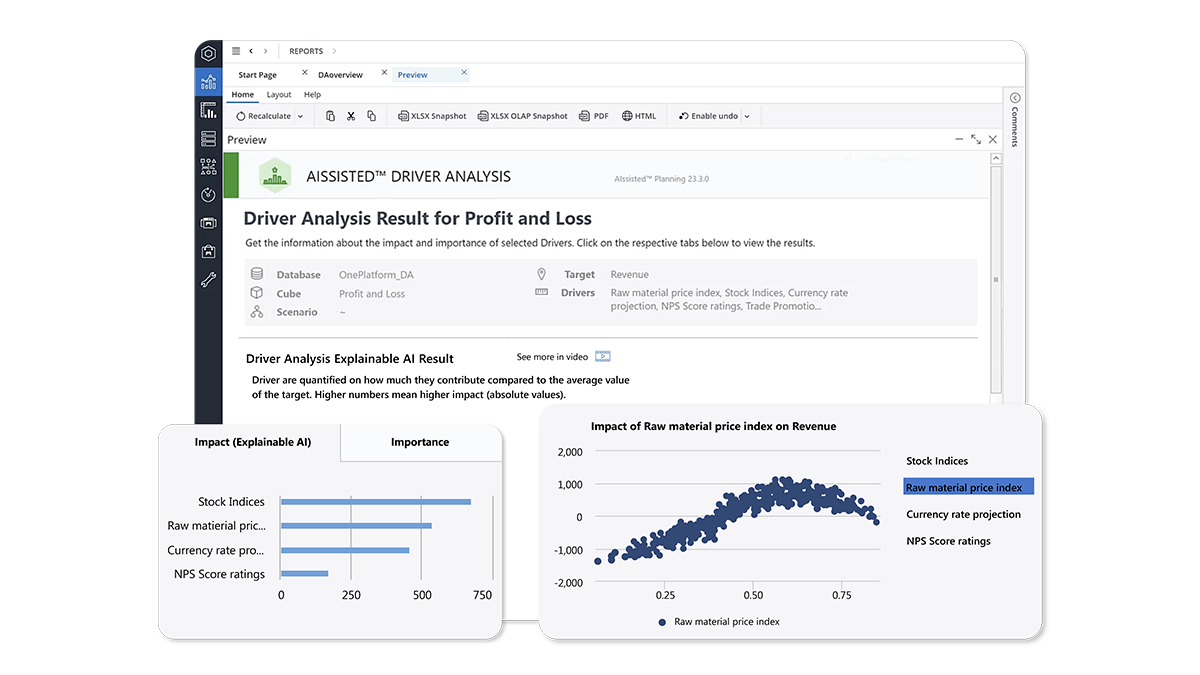
Communication, collaboration, and creating time for ‘digital business partnering’
Great business partnering is about being completely stakeholder-focused. It requires a deeper understanding of stakeholder priorities, more effective communication, a greater holistic view, and a focus on achieving stakeholder goals. Effective management of AI-powered hyperautomation will help finance teams to operate more autonomously so they can focus on communication and collaboration using the digital twin of the business based on key drivers of the business.
Finance professionals will still need quantitative skills to understand and validate the output of hyperautomation, but new key skills for finance professionals must be nurtured and developed: communication, business acumen, relationship building, and leadership. This will help organizations move from siloed planning to integrated business planning (IBP), enabling teams across departments to collaborate through a single, unified platform, so even the most complex businesses can accomplish straightforward planning. This will uncover opportunities, discover gaps in the business landscape, and develop a range of scenarios. The result? Better decisions and better insights across the organization.
Characteristics of the ideal IBP process
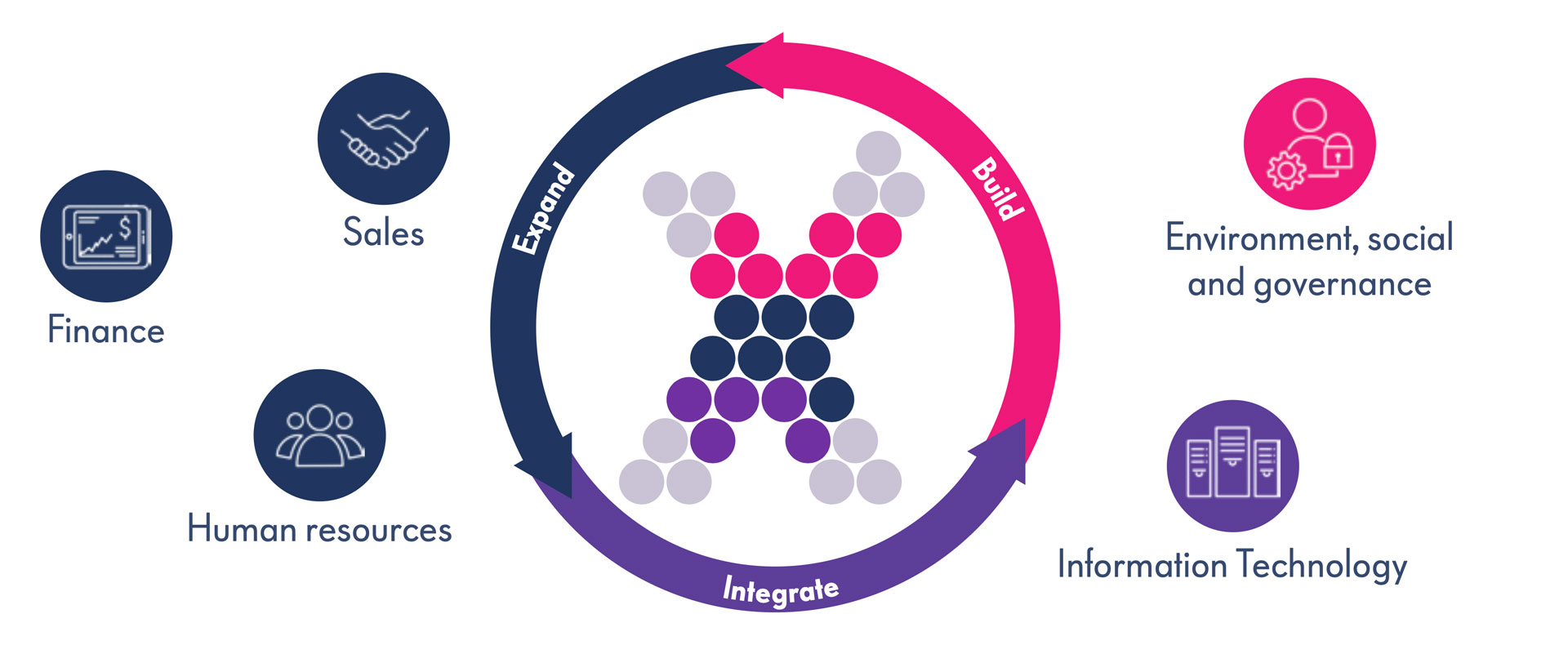
Six key considerations
when selecting hyperautomation and autonomous finance technology to support an organization’s move towards “digital business partnering”
Integrating strategic, financial and operational planning and performance management should, ultimately, lead to more accurate and simplified plans, forecasts, and performance tracking. Different teams should have the ability to create their own reports and analysis functions or combine data in virtually any way that makes sense for them – seamlessly and autonomously.
Ask the following six questions to determine the best solution:
- 1Does the solution provide unified, collaborative, and cross-organizational planning?
- 2Does it offer enough adaptability and scalability to grow with the organization?
- 3Can it break down data silos by surfacing insights via a common understanding of the business?
- 4Does it support hyperautomation and seamless integration with all data sources?
- 5Are modern capabilities, such as GenAI and machine learning, available?
- 6Does integrated AI enable teams to tie financial and operational results together to provide detailed, nuanced insights?
Conclusion
Embrace the new superpowers. No heading back
In an increasingly complex and sometimes uncertain global business environment, CFOs, FP&A teams, and finance departments need to provide more value to their organizations beyond manually collecting data, controlling costs, and presenting reports. They must deliver better insights, uncover new opportunities, and be ready to adapt quickly when confronted with significant challenges. In short, they must embrace transformation so their organizations stay a step ahead of their competition, are able to grow confidently, and can seek out a stronger competitive position.
By leveraging hyperautomation and autonomous finance, finance teams can perform key driver analysis, model any scenario, and operate independently. As finance professionals redefine their roles, they can provide greater strategic planning and innovation, as well as new levels of data automation, integration, and operational efficiency across every department within their organizations. By combining human business partners with digital business partners, CFOs and finance professionals can become more agile and flexible in their thinking and analysis, not to mention communicate their insights and direction throughout the organization.
Embracing this digital transformation – hyperautomation and autonomous finance, among other advancements – is crucial to deliver meaningful change. As a result, CFOs, FP&A teams, and others can make more timely, smarter, data-driven, and actionable decisions. Without such a transformation, finance will be operating with a 20th-century mindset as it tries to navigate through a rapidly changing 21st-century environment.

